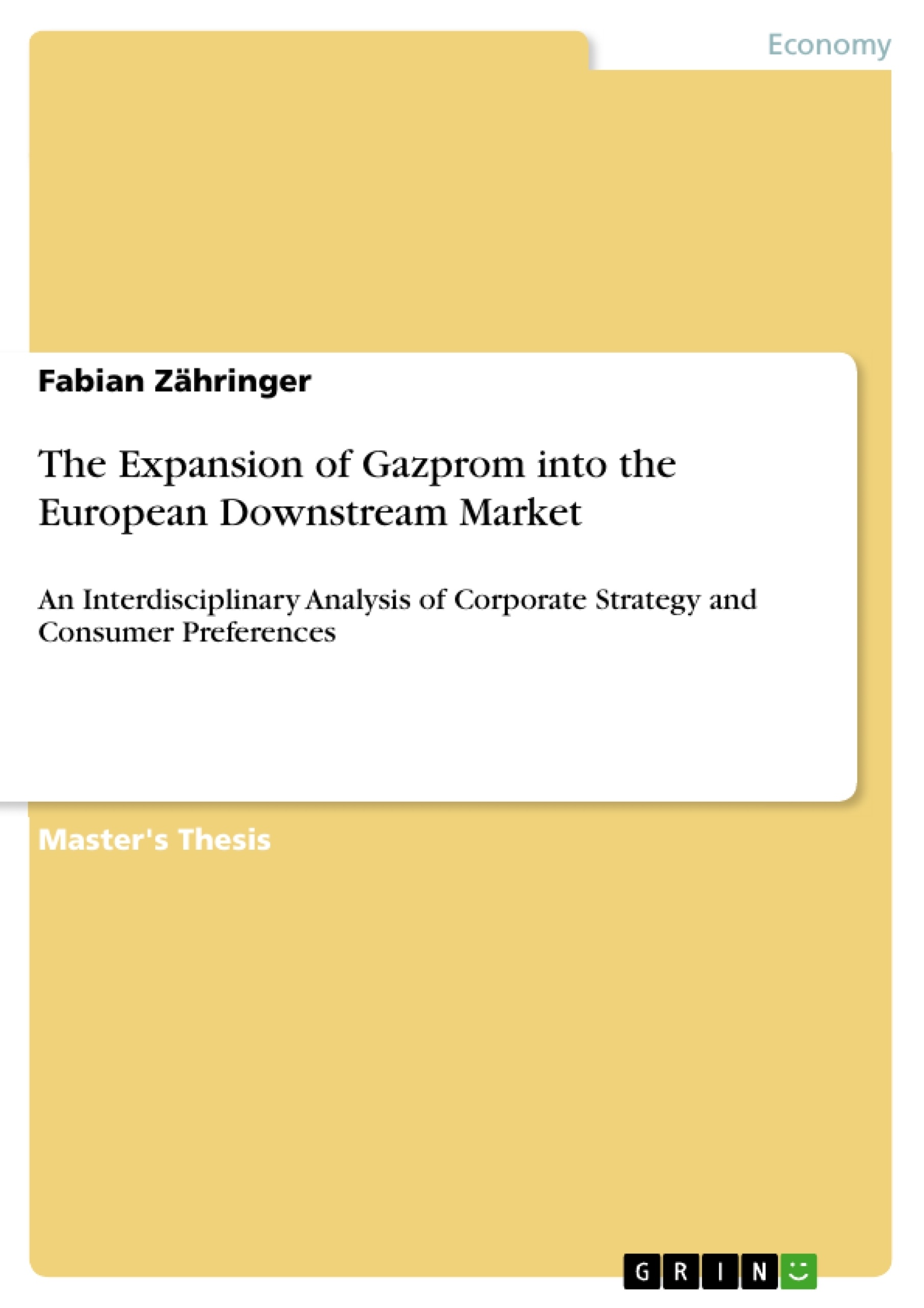This paper analyzes the expansion of Gazprom into the European downstream market from an interdisciplinary perspective. First, an analysis of the "macro perspective" gives insights into the strategic objectives of Gazprom in Europe and the peculiarities of the European gas market. Second, the focus is drawn to the "micro perspective", i.e. the European consumer of natural gas. Hereby an empirical conjoint analysis (ACA) has been conducted, giving insights into the preferences of European consumers towards the product gas. The respondents had to consecutively state their preferences towards hypothetical product combinations containing the predefined attributes price, contract duration, biogas share, supplier and origin. Finally, the findings of each "perspective" were consolidated into concrete strategic suggestions for Gazprom’s expansion into the European downstream market. The conjoint analysis revealed, inter alia, that the most important attribute towards a gas product among private gas customers in Europe is the price. Furthermore, the consumers prefer gas originating from stable, mature democracies - like Norway - over gas from Iran, Russia or Algeria. Furthermore, European consumers are willing to pay a premium of more than 25% (300 &u8364 per year) for gas that is not supplied by Gazprom. Although European consumers are positive about the possibility to receive a share of biogas among the supplied natural gas, a majority is not willing to pay a premium of 30% for a 45% biogas share. These results lead to the suggestion that Gazprom should reconsider its brand strategy in Europe, that the company should significantly improve transparency and public relations and that it should seriously consider embarking on a strategy more sensitive towards Corporate Social Responsibility (CSR).
Inhaltsverzeichnis (Table of Contents)
- Introduction
- Preface and Motivation
- Research Objectives and Research Questions
- Structure and Methodology
- OAO Gazprom - Company Background
- The Formation Period
- Gazprom Today
- Resources and Production
- Exports, Infrastructure and Gas Prices
- Strategic Objectives
- Gazprom's Activities in Europe
- Characteristics of the European Gas Market
- Regulatory Framework and Liberalization
- European Demand for Natural Gas
- Competition from Other Gas Supplying Countries
- Gazprom's Share Holdings in Europe
- Conjoint Analysis of Consumer Preferences
- Objectives
- Theory and Methodology
- Hypotheses
- Operationalization
- Technical Aspects
- Identifying Attributes and Levels: Preliminary Qualitative Study
- Questionnaire Design
- Structure of the Sample
- Data Analysis
- Results
- Part-Worth Utilities of All Attributes
- Relative Importance of Attributes
- Evaluation of Socio-Economic Criteria
- Further Findings
- Part-Worth Utilities and Euro-Equivalents
- Testing of Hypotheses
- Summary of Selected CA-Results
- Strategic Suggestions for Gazprom
- Reconsideration of Brand Strategy
- Improvement of Transparency and Communication
- Differentiation vs. Cost Efficiency
- Quote paper
- Fabian Zähringer (Author), 2007, The Expansion of Gazprom into the European Downstream Market, Munich, GRIN Verlag, https://www.grin.com/document/120953



